|
Spring in South Louisiana is a vibrant season, filled with warm weather, blooming flowers, and the return of greenery. However, it also marks the return of various pests that can become nuisances to homeowners and gardeners alike. Understanding which pests to look out for during this season is crucial for effective pest control and ensuring your outdoor activities remain enjoyable. This blog post will guide you through the common pests that emerge in South Louisiana during spring and offer tips on managing them. Termites
South Louisiana is notoriously known for its termite activity, particularly in the spring when these pests swarm to start new colonies. The warm, humid climate of the region provides an ideal environment for Formosan and subterranean termites, which are particularly destructive. These termites can cause significant damage to homes and other structures, often unnoticed until it's too late. To prevent termite infestation, homeowners should:
Mosquitoes The spring rainfalls in South Louisiana create perfect breeding grounds for mosquitoes. These pests are not only annoying but can also pose health risks by transmitting diseases such as West Nile Virus and Zika Virus. To combat the mosquito population, individuals can:
Ants As the ground warms up in spring, ant activity increases. Fire ants, in particular, are common in South Louisiana and can deliver painful stings. Carpenter ants, which burrow into wood to create their nests, can also be a problem, potentially damaging wooden structures in and around your home. To deter ants, consider the following:
Rodents Rodents, such as mice and rats, may seek shelter in homes as they emerge from their winter hiding spots. These pests can damage property, contaminate food, and spread diseases. To prevent rodent infestations, homeowners should:
Cockroaches Cockroaches thrive in the warm and moist environment that spring in South Louisiana offers. These pests can enter homes in search of food and water, potentially spreading bacteria and allergens. To keep cockroaches at bay:
Tips for Managing Spring Pests in South Louisiana Managing pests requires a combination of preventative measures and timely action. Here are some additional tips to help keep your home pest-free:
Spring in South Louisiana is a beautiful time of year, but it also brings challenges in the form of various pests. By staying vigilant and implementing effective pest control measures, you can enjoy the season without the nuisance and potential harm these pests can cause. Remember, the key to pest management is prevention, early detection, and appropriate action.
1 Comment
If you own property in Louisiana, a termite infestation is always a significant problem. However, an infestation of Formosan termites is worse than an infestation of native termites. It is even more imperative that you hire professional pest control to take care of the problem as soon as you discover it. The more you know about these termites, the better equipped you will be to defeat them. Here are answers to questions you may have about them. What Are Formosan Termites?
While there are termite species native to the United States, the Formosan variety is not one of them. They originated in Asia but have been present in the United States since the 1950s. There is disagreement as to how they got here. Some sources say that they were unwittingly brought by military transports returning from World War II. Others say that wooden shoring timbers brought from the Far East in the mid-'50s were infested. Regardless of how they arrived, they have spread across the Southern U.S. in recycled railroad ties, wood mulch, and packing material that has been transported from place to place. Today, Formosan termites are found in 14 states, including Louisiana. They span the Southern United States from Florida to California and are also found in Hawaii. They are limited to warm climates because temperatures below 68 degrees Fahrenheit prevent their eggs from hatching. What Makes Them So Destructive?Formosan termites are an invasive species, which is a nonnative species that has an adverse effect on native species and the environment as a whole. Several specific aspects of this species makes it so harmful. Prodigious Breeding The queen of a Formosan termite colony can live for up to 20 years. Upon reaching maturity, she can produce between 2,000 and 3,000 eggs every day. As a result of this prodigious breeding, within five years the colony may grow to a million members. Extensive Property Damage The average cost of property damage from Formosan termites is $10,000. In the upper range, the costs may be between $40,000 to $60,000. The longer the infestation goes unchecked and the more damage is done, the only way to remedy it may be to demolish the building and rebuild it from scratch. Bear in mind, homeowners insurance policies do not cover damage from termites. The property damage can extend beyond buildings. While most termite species only eat dead wood, the Formosan termite may attack trees that are still living, gradually killing them by consuming them from the inside out. The hollowed-out tree becomes unstable, especially in conditions of high winds. If it is not removed, it can cause more property damage or injuries by falling onto a building or a person. Adaptability Formosan termites are considered subterranean, meaning that they live primarily underground. You may not see evidence of an underground colony, but because they have such large numbers, a single colony can cover a linear acre. They need water, so they can burrow as deeply underground as the water table goes. However, just because the termites live primarily underground doesn't necessarily mean that they always stay there. If they find everything that they need above ground, including water and a cellulose food source, they may build what is called an aerial colony. The termites build nests out of a material called carton that consists of soil, fecal material, chewed wood, and saliva. They like to build nests in hidden areas, so you may find an aerial nest made of carton in areas such as crawlspaces, attics, or wall voids. What Are the Capabilities of Formosan Termites? The Formosan type of termite is more aggressive than native termite species. While they only eat wood, they have the ability to chew through other materials, such as PVC pipe, if it presents a barrier to them. They can also chew through rubber and even soft metals, compounding the damage they can cause. However, some of the Formosan termite's capabilities have been exaggerated or misunderstood. For example, it does not secrete acid from its head. Rather, it secretes a sticky substance similar to latex, which helps to protect it from ants and other insect enemies. Contrary to popular belief, the Formosan termite is not able to chew through concrete. However, it can exploit vulnerabilities in the concrete. For example, termites can get through a crack in the concrete the thickness of a credit card. If the opening is not wide enough, they do have the capability to displace grains of concrete one by one until they can break through. How Does a Termite Infestation Begin? A Formosan termite infestation begins the same way as an infestation of native termites. At some point, a mature colony produces a swarm of winged termites, both male and female. The winged termites, called swarmers, have two jobs: First, they mate and then they fly away to found new colonies. When a female swarmer finds a new nest site, her wings fall off and she lays her eggs and starts building a new colony, of which she becomes the new queen. Swarms occur in the spring and early summer during evening hours, especially just after a rain when the air is humid and the winds are calm. What Are Signs of a Formosan Termite Infestation? Outcomes for Formosan termites removal are better when you catch the infestation in the early stages before the insects have a chance to do much damage. You should inspect your property frequently for the following signs. Nests Termite nests are often located in out-of-the-way places. If they have an aerial nest in your building, you may not be able to find it without removing wall coverings. If it is underground, it may be at a distance from the structure. If you do find a nest, you may be able to recognize it by the carton from which is it made. You can use a screwdriver or an awl to probe the area and confirm whether termites are present. Damage to Wood or Other Building Materials Termite damage is often subtle, at least at first. You may notice small pinholes in wood structures or drywall. If you strike a wooden structure with termite damage, it may make a hollow sound. Don't limit yourself to checking wood for evidence of infestation. Formosan termites can also chew through other building materials without eating them, so check for holes in PVC pipes and other relatively soft structures. Shelter Tubes Shelter tubes may be the most obvious sign of a termite infestation and therefore the one that you are most likely to notice first. Termites are vulnerable to conditions of high temperatures and low humidity. To protect themselves as they are traveling back and forth between their food and water sources and their nest, they construct shelter tubes. These are often found along the foundation and look like dried mud. The shelter tubes may remain even after a previous colony is defunct. To find out if the tube is active, you can break it open to see if there are still termites inside. Presence of Swarmers If you find swarmers on your property, it could mean that you have an infestation. However, this is not always the case. If there are many infestations in your neighborhood, you may see up to 100 swarmers in your house during the season when they are active. These relatively few swarmers still have to be dealt with to prevent an infestation. If you see more than a few, it may be a sign of an active infestation on your property. How Do You Know if the Termites on Your Property Are Formosan? How can you tell whether the termites on your property are a native or invasive species? Formosan termites differ from other species in some important respects, but to comprehend the difference, you need to understand the different roles in a termite colony. In any termite nest, there are different types of individuals, each with a specific role to play in the colony:
As implied by the name, the role of the reproductives is to breed and repopulate the colony. Swarmers are a type of reproductive and are more useful for identification purposes because they are found outside the nest. Formosan swarmers are distinguishable by their transparent wings with veins running parallel to one another. The wings also have reddish-gold hairs growing out of them. Reproductives in the colony do not have wings. Worker termites are responsible for building and maintaining the nest. Formosan workers are nearly indistinguishable from their native counterparts. Soldier termites are responsible for defending the colony from threats. Formosan soldiers are distinguishable by their large mandibles, tear-drop-shaped head, and the gland on the front of their heads from which they secrete defensive fluid. This type and the swarmers are the most useful for identification. If you know where the nest is, you can collect termites for testing from there. Otherwise, you can attract swarmers by putting a small container of water mixed with a little dish soap near an outdoor light source and turning off other lights in the vicinity. Once you have a sample, submit it for testing to your county extension office, a university entomology department, or a local exterminator. How Can You Prevent an Infestation of Formosan Termites? There are specific things you can do to prevent termites from infesting your property. Clean Up Your Yard Termites feed on materials containing cellulose. In addition to wood, this includes cardboard and paper. Remove any dead wood or scraps from your yard so that you do not provide termites with a source of food. Keep Water Under Control In addition to food, termites also need a reliable source of water. You can help keep them out of the house by repairing any plumbing leaks. You can also keep them away from your foundations by keeping your gutters clean and well maintained and installing downspouts so that the runoff stays well away from the building. Position sprinklers so that they spray away from the sides of the building. Turn Off Outdoor Lights Swarmers are attracted to bright lights. You can avoid attracting them to your building by turning off the outdoor lights at night when they swarm. If this is not possible, replace the white light with a yellow bulb that does not attract insects. Inspect Foundation for Cracks Check the foundation and the outside of your building for cracks that could allow termites to get in. Seal up any cracks that you find. Do not assume that a crack is too small or narrow to worry about. Remember, Formosan termites only need a crack the thickness of a credit card to get in. Cut off Termites' Access to the Building Any wood that comes in contact with both the foundation and the ground can provide a conduit by which termites could enter your building. Cut off such conduits by preventing any contact between wood and your foundation:
Inspect for Termites In addition to performing routine inspections of your own for signs of termite infestation, have a professional inspection performed at least once a year. How Do You Get Rid of Formosan Termites? If you find Formosan termites on your property, it is not recommended that you try to get rid of them yourself, as you do not have the necessary equipment or most up-to-date chemicals. Instead, you should call a licensed pest control company with technicians who have the necessary expertise. Pest problems of any form can turn hazardous if not taken care of quickly. Termites, in particular, can cause extensive damage to wooden structures, potentially rendering them unstable. Whether the pest invasion consists of bed bugs, rodents or termite swarms, it's not usually recommended that you try to remedy the problem on your own. Learn more about how pest control specialists are best qualified to determine termite species and the means to eliminate them.
Termite Species There are many different kinds of termites with distinctive behaviors and characteristics. While most species hold destructive potential, the ranges and degree of trouble vary widely. Subterranean Termite Swarms Many termites only inhabit tropical and subtropical regions due to their preference for warm, moist conditions. However, subterranean species can be found everywhere in the United States. Their diet consists largely of plants and especially trees or wood. Since these termites live underground, it can be challenging to detect their presence until the infestation has reached a more severe state. Swarmers, or alates, are winged termites that leave their birthplace to start new colonies. They generally embark on their searches for a new home in the spring or early summer, when the weather begins to turn warmer and more humid. Once a colony is established, it can grow to number in the hundreds of thousands or even millions strong, and most of these insects work around the clock devouring wood. If a colony remains undetected for many years, it can eventually destroy entire buildings. Drywood Termites Drywood termites prefer to make themselves at home inside support timbers and furniture rather than underground. They are most common in the southern and coastal regions of the United States. As with subterranean termites, the drywood species produces swarmers that spread infestations. Look out for winged termites and their discarded wings around your house or business. If you suspect a termite infestation, contact trusted pest control experts to perform an inspection. Dampwood Termites The dampwood species of termite is attracted to woods with high water content such as logs, dead trees, and wooden posts. Due to their persistent need for moisture, dampwood termites don't typically infest structures themselves. However, they can still cause damage. Not even telephone and electric wiring are safe from them. Different termite species require distinct methods of removal. Contact professional pest control to determine the best way to take care of your pest problem. Conehead Termites Conehead termites are named for the pointed shape of their heads. While coneheads tend to prefer fences, trees, and open grassy areas, they may also invade buildings. This termite can also travel above ground, unlike other species relying on underground termite swarms to spread. Unfortunately, this enables coneheads to spread quickly and survive in a greater variety of environments. A distinguishing feature of coneheads that may help early detection is their tendency to build nests in trees or other structures above ground. This termite species is a danger not only to manmade structures but to trees and shrubs, causing more destruction at a faster rate than other termites. If coneheads aren't properly eliminated, they may spread quickly due to their unique traveling capabilities. If you suspect a conehead invasion at your home or business, contact a licensed pest control agency immediately. Formosan Termites Another invasive species, this subterranean termite is bigger and more destructive than other species. The swarmers from Formosan and other subterranean termite species can be mistaken for flying ants. To distinguish between the two in case swarmers are trying to establish colonies in your home or business, look for straight antennae on swarmers. In comparison, flying ants have curled antennae. Additionally, flying ants have different-sized wings, while flying termites have only one size of wings. Swarmers are also drawn to light around porches or other outdoor lighting areas and often shed their wings in those locations. Stopping swarmers before they establish new colonies is essential to preventing more termite swarms, infestation and damage. The best way to prevent termite swarms is to hire a licensed pest control company to identify pests and termite-proof your home or business. Signs of a Termite Problem Termites cause billions of dollars in damage every year in the United States. Besides consuming wood, termites also create tiny tunnels called mud tubes to keep themselves moist and travel between their nests and food sources. These passages can sometimes be visible running along foundations or trailing down walls. While termites mainly eat cellulose, they are also capable of chewing through substances such as plastic or insulation in their efforts to construct mud tubes. Termite nests and mud tubes may not be visible until affected wood is accidentally bumped or damaged, exposing the damaged structure. It is critical, therefore, to remain vigilant for other signs of termite infestation. Watch out for these common indications of termite problems:
Eliminating Termite Swarms for Good The best way to prevent termites is to hire a trusted pest control agency to inspect and termite-proof your home or business. Ask family members or friends if they have any good recommendations for a pest control agency. Then, compare estimates and plans from among your chosen candidates. Always check that the company you select has a valid and active license. There are also actions you can take to prevent infestations during the interval between pest control visits. Follow these tips to help prevent termites:
You may feel pressured to take care of a pest issue such as termite swarms yourself due to time or finances. However, misidentification of the pest may lead to incomplete removal and further damage. Licensed experts are the best solution to termites and other pest problems. Bug Ninja Pest Control quickly takes care of termites, rodents, mosquitos and other pests. Contact us to transform your home or business into a pest-free location. Termites are fascinating insects, but they can cause significant damage to homes and businesses. That is why it is essential to take the proper steps if you find a termite tube. Keep reading to learn all about these mysterious mud tubes and what to do if you spot one around your home.
What Is a Termite Tube? A termite tube is a thin structure made from mud and wood pulp. It serves as a protected highway for termites to travel from one area to another. They allow termites to:
Many tubes extend between the ground and the wood sill plate on a building. These are known as working tubes and are used to enter and exit the structure. There are also hanging tubes, which you may find extending from floor joists in basements or crawlspaces or ceilings inside a home with a heavy infestation. Why Do Termites Build Them? Subterranean termites live all (or almost all) of their lives underground. Their bodies require high moisture levels, which are found in the soil. For most termites, exposure to the air and sun will cause them to dry out. As a result, they travel through the soil, wood, or wood fiber materials. When they must go from one area to another, with no direct, protected route, termites build thin tubes out of mud and bits of wood or fibrous materials. So, just like a subway allows people to travel from one place to another without dealing with traffic and road conditions, a termite tube lets the colony move from one area to another without exposing themselves to the outside environment. How Do Termites Make Mud Tubes? Subterranean termites make a sort of plaster from soil and wood mixed with their droppings and saliva. The termites will start applying this to a surface they want to travel over and gradually build up the structure until it forms a tube. It is lengthened as they go forward. An exploratory termite tube can be constructed in just a few days; however, a whole tube will usually take a few weeks to build. Can You Just Take Mud Tubes Down? Many homeowners mistakenly believe removing any visible mud tubes will eliminate the termite problem. However, it will just force them to make new tubes. Alternatively, if they have already settled into another portion of your home, they may not even notice the broken tunnel. You might think the problem is solved when, in reality, it is just growing in another part of the house. For these reasons, removing a termite tube yourself is generally not a good idea. You might want to break a small portion of a tube to determine if it is active. If you decide to give this a try, follow these steps: Knock out a small portion of the tube — no more than a couple of inches. If it is active, there may be termites moving inside. Leave it otherwise undisturbed and inspect it daily. If there are termites still using it occasionally, they will try to repair the tube. On the other hand, if it remains broken after several days or a week, it is probably no longer active. An inactive tube does not mean you are termite-free. Remember that termites build tubes to avoid exposure to the outside air. If the access tubes are inactive, the termites can easily have moved on to another area of the house and are now happily tunneling through the wood there. What Should I Do if I Find a Termite Tube in My Home? Now that you know a bit about termite behavior and why they build tubes, let's look at what to do if you find one around your home. Remain Calm This is a crucial first step. The sight of a termite tube can cause a moment of panic. Your mind might automatically conjure up images of termites crawling through the house's framing or tunnel-marked wood struggling to hold walls up. However, in most cases, especially if you are vigilant about monitoring your home for signs of pests, that is not realistic. So take a moment to collect your thoughts and remain calm as you address the situation. Inspect the Termite Tube Take a few minutes to inspect the termite tunnel. Be careful not to disturb it if you can help it. Consider these things to look out for: Is the mud moist and fresh-looking, or is it dry and crumbling? This can help you determine if it is an active tube or an abandoned one. Remember that an old tube doesn't necessarily mean you don't have an active problem; the termites could simply be in another area of the home now. Are there any signs of termites going into or out of the tube? This is a surefire way to know if there is current activity. Call in a Professional Professional termite control experts have the training and equipment to handle termite infestations in homes and businesses, which is why calling one if you find a termite tube is your best course of action. First, our technicians will determine if the tube you found is active, and then they will dig deeper into the situation. We can often determine where the termites are and then destroy the entire colony. Because termites can control a large portion of land, sometimes traveling up to 200 feet from the nest to find food, this can be a highly complex process. However, we use bait stations to effectively attract termites who then bring the poison back to the rest of their colony. How Will You Handle Termite Tubes? Now that you know the best thing to do if you find a termite tube around your home, the next steps should be easy. First, no matter how gross the tubes may seem, try to remain calm and inspect them for moisture content or visible activity. Then, contact our office to schedule a professional inspection. Our technicians at Bug Ninja Pest Control know the correct way to handle termite mud tubes to eliminate the infestation at its source. Drywood termites are found around the world throughout the tropics. They consume dry wood and are often found in residential roof materials and within the wooden wall supports of homes and other buildings. These termites can also infest any dead wood that you have lying around near your home.
Though termites are small, they can cause as much as $5 billion in property damage every year (in just the United States!) That’s a lot of damage. Unfortunately, since they’re so small, termites are often overlooked until they create a full-blown infestation and do a lot of hidden structural damage to your home or commercial building. That’s why it’s so important to learn how to spot signs of drywood termites in and around your property. Look for These Signs of Drywood TermitesWhen you know how to recognize signs of a termite infestation, you can quickly take action to get rid of the problem before significant damage is caused by the little pests. If your area is prone to termite infestations, it’s important to inspect your home or commercial building regularly. Look for these seven common signs of drywood termites. 1. Flying Termites One obvious sign of a termite infestation is the visible presence of flying termites. Winged termites can be both males and females, and they’re responsible for leaving their nests to establish new colonies. So if you see any flying termites on your property, watch out! They’re most likely looking for a new home, and you don’t want it to be yours! 2. Small Bugs That Look Like White Ants Some people see drywood termites but think they are small, white ants. If you see white or cream-colored “ants” near your home or commercial building, you may have a termite infestation. Termites sometimes look transparent. They also have straight antennae instead of the curved antennae of ants. Termites are also much thicker through the waist area than ants. Finally, there are no species of white ants, so any white ant-like bug you see is likely a termite. 3. Termite Droppings Drywood termites leave droppings (called frass) behind. This is one of the most common indications of a termite infestation. As the termites consume wood, they create fecal matter. To dispose of this fecal matter, they push it out of the tunnels they make in wood. The feces pile up outside the termite nests and can be easily spotted if you know what you’re looking at. The droppings left by drywood termites are very fine. Many people mistake them for sawdust. But if you haven’t been sawing anything in your home or office building, there is no reason for there to be sawdust inside. If you see it unexpectedly, look around for telltale signs of termite burrows. These could be tiny holes in your wood paneling or any other wood structures. Often, there is a dark powdery substance left directly around the outside of termite holes. 4. Hollow Wood Termites like to consume the inside portions of wood while leaving the outside portions somewhat intact. So if you’re trying to find out if you have drywood termites on your property, look for branches, logs and other pieces of wood that are hollow on the inside. Hollowed-out wood is very lightweight and may feel or look papery. Termites also use the same eating pattern to consume the inside portion of chair legs, bedposts and other types of wood furniture. Some common horror stories involving termites include accidentally pressing a finger right through a termite-consumed door frame or lightly bumping a skirting board with a vacuum cleaner and breaking right through the board due to termite damage. 5. Fallen Termite Wings Even if you don’t actually see termites flying around your house or building, you may notice fallen termite wings. Discarded wings are a sign of a serious infestation. Soon after finding a mate, swarmer termites lose their wings. So if you see fallen termite wings, it means there are termites on your property that are getting ready to start a new colony (if they haven’t started one already). This is the time to schedule pest control services without delay. 6. Clicking Noises in Your Walls One of the most annoying signs of drywood termites is clicking sounds in your walls at night. These noises occur when the termites bang their heads against the wood to warn the colony of danger. Clicking noises can also be caused by termites simply shaking their bodies. And of course, the chewing sounds termites make as they consume the wood in your home or building can be quite loud when it’s multiplied by hundreds or thousands of little bodies. If you hear unusual clicking sounds coming from your walls, press your ear against the wall and listen closely. You’ll soon be able to tell if the sounds are really coming from inside your walls or from somewhere else. 7. Doors That Are Hard To Open As drywood termites eat through the wood of your doors, warping is a common result. Warped doors tend to become stiff when they’re closing or opening. Termites also create a lot of moisture within wood as they consume it. It’s easy to confuse this damage with damp weather, but take a closer look to rule out a termite infestation. You may also discover that your wood window frames are harder to open or close when you’re dealing with a termite infestation. Schedule Your Pest Service for Drywood TermitesIf you have any of the above signs of drywood termites, it’s essential to do something about it as quickly as possible. Termites can multiply at an alarming rate. They are also voracious eaters and can quickly consume massive amounts of wood within your home or office building. Many homeowners discover (too late) how serious a “small” termite problem can quickly become. To protect the structure of your home or building while also protecting your bank account, look for signs of termite problems regularly. If you are ever suspicious of termites, contact Bug Ninja at your earliest convenience. We’ll get you scheduled for our leading pest control services as soon as possible so you no longer have to worry about the damage drywood termites are causing to your property. Termites are small bugs that consume wood and can cause thousands of dollars in damage to homes if they are not exterminated by professionals. Though termites’ main diet is wood, they rarely bite humans as well. Here’s how to know if you have termite bites or if it’s some other bug that’s biting you. What To Know About Termite Bites If you have bites on your body, it’s unlikely that they’re termite bites. Termites keep pretty busy eating up all the wood they can find (at your home’s expense!). Most termites also have very tiny jaws, which makes it difficult for them to get a good hold on human skin. If you’re experiencing bug bites, they’re probably due to some other type of bug. However, there are some types of termites that can bite anything they deem a threat. Soldier termites are one such type of termite. They possess larger heads and bulkier jaws than some other types of termites. However, even though they can bite humans, this doesn’t mean they choose to do so. Bites from soldier termites are still extremely rare. How To Tell if It’s a Termite Bite Most bug bites have fairly similar symptoms. They often cause skin irritation and bumps that may be:
These symptoms describe many different types of bug bites, including termite bites. So how can you tell if you’re dealing with termite bites instead of some other type of bug bite? The best way is to try to rule out other types of bug bites. Here are some questions you can ask yourself to try to figure out what type of bug bite you have.
Get Rid of Termite Bites for Good No one should have to deal with the discomfort of termite bites. Fortunately, you can get rid of the bugs by contacting Bug Ninja Pest Control. We’ll come out and take care of all your pest issues so you can live in peace. It is termite season in Baton Rouge. While termites are active all year, they become very active right around Mother's Day. (Sorry Mom!) It is the right mix of temperature and humidity for termites to leave their home and seek out a new place to move. We call it swarming. Termite swarming can be as simple as seeing a few termites flying around a light post. Other times it can be down right frightening like walking into a room of your home buzzing with flying termites. If this is you, don't freak out just yet. Termite swarmers to not necessarily mean you have a termite problem in your place. Get a Baton Rouge based pest control company to do a thorough termite inspection on your home. How to Look for Signs of Termites Wings - Look for loose wings lying near sources of light. Termite swarmers are drawn to light sources at night. Once they can to these locations, they can drop their wings and look for both a food (wood) and water source. Flying Termites - Obvious, but these can be confused with flying ants. Capture a few in a container so you can show them to your pest control company representative. Wall Pin Holes - Small pin sized hole in your wall may be termites. Look for frass and dirt at the hole or on the ground beneath it. Termite construct tunnels, but need to get rid of what they don't want in the tunnels. Mud Tunnels - Check around the foundation of your home. A hardened mud tunnel going from the ground to your home along the foundation is sure sign of termite activity. It could be an old tunnel, so your pest control technician will check for damages to your home. Weak Spots - Termites eat away cellulose in wood. This can lead to weakened areas and creaking in flooring and cabinets. Bubbling Paint - Raised areas in paint can be a sign of termite activity. This can be from termite disposing of frass from beneath the paint. Instead of the frass falling to the ground, it stores behind the paint instead. Termites are very prominent in south Louisiana. If you think you may have termites, contact Bug Ninja Pest Control today for a free termite inspection. You can also get your home under termite contract to prevent termite damage in the first place. There are plenty of things to love about fall in New Orleans. However, while autumn in the city can bring fun times and pleasant weather, it also brings a new group of bugs and pests to worry about. Where moist conditions in the spring and summer create ideal environments for roaches and mosquitoes, the dryer weather in the fall is ideal for spiders, rodents and other insects that like to create nest-like homes in attics and other typically dark spaces. Worst of all, these pests have had the entire summer to breed and build their population before emerging in the fall. Their high numbers mean homeowners must be aggressive when it comes to fall pest and rodent control. What types of pests should you be on the look out for come fall in the city? Here are a few of the worst offenders. Rodents
It’s a well-known fact that rodents are some of the city’s most despised residents. In fact, one 2016 report ranked New Orleans top in the nation for rat and general pest infestations. The common house mouse is a main offender, taking up residence in the walls and basements of New Orleans homes in the fall and winter. As the weather cools down, these critters like to sneak into buildings through cracks in the foundation, window gaps and the like. They need no more than a quarter inch of space to get into your home in some cases. Once inside, they can quickly wreak havoc as they chew and shred up everything from paper to furniture to wiring. They can gnaw holes into walls and in extreme cases can even weaken a home’s infrastructure. Take the first steps toward rodent control by:
While those steps can provide a good start, mice can be notoriously difficult to get rid of both because of their rapid reproduction and how tricky they can be to catch. This and the dangers associated with their waste makes it a good idea for homeowners to leave rodent control to New Orleans pest control experts. Spiders Fall is a prime mating season for spiders, which means they are more likely than ever to come out of hiding and cross your path. Southern Louisiana is home to more than 16 different types of spider, including the black widow and brown recluse spiders with bites that can be fatal to humans. That makes a spider problem more than a creepy inconvenience and as important as rodent control. Spiders typically prey on small insects. When those pests come into your home seeking warmth and food in the fall, spiders have a tendency to follow them. Some of their favorite homes include attics, crawlspaces and basements. Because spiders aren’t much interested in human food, wiping down counters, disposing of trash and other typical pest prevention efforts aren’t likely to work. Instead, focus on:
Because of the unique threats some species of spiders can present, consider asking about experience with spider extermination when choosing a New Orleans pest control expert for general critter and rodent control. Clothing Moths At less than an inch long, the common clothes moth might not seem like a major threat. But it can cause a lot of damage to personal property, as countless New Orleans homeowners discover each year. These cream-colored menaces like to feed on just about any fabric item, especially wool and cashmere. The insects aren’t necessarily more plentiful in the fall, but they are more likely to be noticed around then, as homeowners pull cardigans and other thicker clothing out of storage boxes. When you notice tiny, unexplainable holes in your favorite shirt or fall pants, these moths are a likely culprit. The fall, when you’re likely packing up summer clothes, is a great time to address these pests. You can fight back by:
Like rodent control, moth control can help you avoid damage to your personal property. Termites Termites are a known problem in New Orleans, particularly in the French Quarter. What many people don’t realize is that termites cause trouble year-round, even when you can’t see them. These wood-chewers don’t hibernate. Instead, they prefer to dwell in a warm area that’s roughly 75 degrees. As the temperatures cool down outside and warm up inside, more and more of these creatures are likely to show up in your home, where they can destroy its infrastructure with shocking speed. Unfortunately, the city doesn’t provide any funding or help with termite eradication in private homes. That leaves it up to you, the homeowner, to take steps to keep them out of your house. Take action by:
Termites present one of the most destructive and challenging pest menaces in the city. It’s a good idea when you are investing in rodent control or other pest prevention to ask your specialist about their specific experience with these creatures. The fall months can bring a welcome respite from some of the heat and humidity of a New Orleans summer. But the change of seasons may also bring new types of pest headache. When fair-weather pests are ruining your autumn, consider calling a pest management expert to provide the rodent control and general extermination to help you reclaim the season. You look out the window one evening. Under the light of a nearby street lamp, you observe a crowd of small, swarming insects. You then realize you are looking at a termite swarm and that you must switch off your home’s outside lights so as to not attract the termites to your house. At times, it is easy to discern when termites are a problem and when to call New Orleans termite control. However, for a number of reasons, a lot of people will occasionally confuse ants for termites and vice versa. Proper identification of ants and termites is important so that your local pest control can use the right methods to vanquish the infestation. At first glance, ants and termites are quite similar. They’re both small insects that build and maintain colonies. Each species possesses a nearly identical caste system, with soldiers, workers and queens. In addition, ants and termites also have members of their kind that can fly. While many people are more likely to think of termites as a swarming type of insect, there are ants that have wings and are known to swarm. At times, homeowners may mistake swarming ants for termites. And finally, there are ants that may cause damage to wood that can appear to copy the damage wrought by termites Appearances Matter However, New Orleans termite control professionals will tell you that ways exist to differentiate ants and termites. One way is to check the appearance of a termite or an ant for certain signs. For one thing, termites are lighter in color than ants, with a white or creamy complexion. At times, a termite may appear translucent to the eye. Usually, ants come in dark colors, though this may vary due to the species of ant. And while both ants and termites have antennae, the antennae of ants are elbowed in shape, while a termite’s is straight. A professional from New Orleans ant control can also discern ants and termites by their body structures. Ants possess thin waists that connect to a body that appears sharply segmented. On the other hand, termites generally look to have the same width along their bodies. Insect Classes Both ants and termites include a soldier class among their ranks. Soldier ants and termites are tasked with protecting their respective colonies from outside attack. However, while termites include male and females among their soldiers, ant soldiers are always female. Ants and termites also have their respective worker castes, but again, ant workers are all female compared to the males and females that make up the termite workers. Additionally, termite workers are numerous and make up the largest number of individual termites within a colony. By contrast, there are not many worker ants compared to the other ant castes. However, you are more likely to see worker ants than you are termite workers. Ants often roam in the open looking for food, while termites keep a low profile as they prefer to avoid light. Wings New Orleans termite control workers will also point out that some ants and termites are winged, which is another reason the two may be confused for one another. In fact, winged ants and termites are both referred to as alate. Winged ants and termites are also tasked with leaving their nests in the summer to start new colonies elsewhere, although flying termites will also depart their nests in the spring. However, flying ants possess two sets of wings that differ from each other in size, while a termite will have two sets of wings of the same length. Termite wings are also long, twice the length of the flyer’s body. By comparison, the wings of an art are shorter and are more proportionally sized to the ant’s body. Additionally, a subset of winged ants exist called drones, which are the only male ants to be found in an ant hierarchy. Their job is to fly off with female ants to start new colonies. Once the male ants mate with the females, the males die. Damage Type Some ants can still be mistaken for termites due to the damage some ants cause to houses. Carpenter ants, for example, are frequently misidentified as termites because their nesting activities will sometimes mimic the damage caused by termites. New Orleans termite control can tell carpenter ants from termites by verifying signs that the colony in the wood was built by carpenter ants. Carpenter ants will excavate the inside of wood to create shelters for their colonies and then take the bits of wood they have dug out and place them in neat piles at the entrance to their nests. However, even though carpenter ants can do a lot of damage, they do not actually eat wood, as wood is of no nutritional value to them. Instead, they feast on fungal materials and decay that reside on degenerating wood. They also eat sweets or other insects, including termites. Carpenter ants are identifiable by the wood they leave out of their nests. Since termites eat wood, they do not leave such residue. Wood Damage
New Orleans ant control workers can also identify carpenter ants by examining how the damaged wood on your property appears. If carpenter ants are the culprit, the wood will appear polished and cleaned for a smooth look inside. Conversely, if you have an infestation of subterranean termites, the inside of the wood will possess deposits of mud and soil. Carpenter ants also bore holes through the wood so that unwanted waste can be pushed out of the colony. The holes are not very large, and in fact, the wood may appear unharmed to the naked eye. A telltale sign that these holes exist is if you discover debris around the wood. This debris can consist of wooden shavings, dead insects and feces. Homeowners are right to be concerned when they spot possible signs of termites around the house. In some cases, however, the culprit may not be a termite at all, but a type of ant. In such cases, it is important to consult the expertise of a New Orleans termite control professional to discern the type of pest infesting your home. Once the pest is properly identified, a pest control company can cleanse your home of the infestation using the appropriate chemicals and other necessary methods. Southern Louisiana, with its warm, subtropical climate, is a favorite spot for vacationers. It is also a prime destination for insects. They thrive in the moist climate, and the topography provides many places for them to live. Like humans, insects want to be left alone to find shelter, eat food, mate, and raise young. When the worlds of humans and insects collide, though, some biting and stinging bugs will defend themselves, however reluctantly. In certain cases, you may want to consider pest control services. In southern Louisiana, it is a good idea to ask this important question: Will it bite? Mosquitoes In short, yes. However, mosquitoes do not actually bite. Rather, female mosquitoes insert a straw-like mouthpart through and under your skin in order to feed. Your body instantly reacts to a substance the mosquito releases just beneath your skin, and your immune system kicks into action. It sends histamine, which makes blood vessels swell, causing the characteristic bumps you see after a close encounter with a mosquito. Nearby nerves become irritated from the swollen vessels, resulting in an itching sensation. Termites Not likely. In general, termites feast upon wood rather than humans. Soldier termites, though, can become biting bugs if they feel they are under attack. Therefore, bites from these termites only happen when they are severely threatened. This is a case where it is best to leave these insects alone and hire professional for termite pest control. Ticks Yes. After a tick gets on your body, it generally settles in your hair, armpit, or groin. It will get comfortable and begin to take in blood, growing larger as it feeds. The tick may gorge for days, or in some cases weeks, before releasing its hold and falling off. Once attached, ticks do not roam around, nor does one tick make multiple bites. The best way to know if you have received a bite from a tick is to search your body. Ticks are generally harmless, but they can pose a danger to those who are allergic to them. Some ticks also carry viruses that can cause debilitating illnesses. Spiders
Unlikely. Spiders are not aggressive bugs. They only bite when they are feeling threatened. In fact, they do not want to have contact with you any more than you want to with them, and they will only bite in cases of accidental contact, such as a human reaching into a nook where a spider is hiding. Most spiders’ fangs cannot penetrate human skin. More sensitive individuals could sometimes experience localized swelling, redness, and pain should a bite occur when there is inadvertent contact (during the night while sleeping, for example), but many humans would not even notice a bite. There are more than 3,000 species of spiders throughout the United States, with only three of these considered dangerous to humans. All three of those species are found in Louisiana:
The best rule to avoid these bugs is to look before sticking your hand anywhere. Pay attention to your surroundings. One of the names says it all: recluse. These spiders want to find quiet places, and they only bite if they feel severely threatened. Leave them alone, and they are more than happy to return the favor. Stink Bugs Probably not. So-called stink bugs are vegetable and fruit eaters, and they usually do not bother humans. Like other insects such as termites, they only bite if they feel severely threatened. Cockroaches Not likely. Cockroaches are generally not biting bugs. They may bite humans only in cases of severe food depletion, and even then they only target people who are sedentary. Ants Yes. Ants do bite. However, each species has its own type of “attack.” Sugar ants sometimes bite humans in defense, but their bites usually do not cause pain. Carpenter ants, however, can inflict painful bites if they are feeling threatened. Fire ants also bite, but it is their sting that has become infamous. They bite in order to grip their prey securely, then begin to sting. Fire ants can build huge mounds from which they swarm out if disturbed. They have been known to harm and even kill livestock. Bees No. Bees are not biting bugs but rather stinging insects. Female bees are the ones that can sting. When a honeybee stings, however, it pays the ultimate price: Its stinger becomes embedded in the human’s skin, and the bee dies. Queen bees retain their stingers and can sting multiple times, but they seldom venture out in the open and encountering one is not likely. Bumblebees are not hostile. When a female bumblebee feels severely threatened, though, it will caution you up to three times before stinging by raising and then straightening its middle legs and displaying its stinger. If you see this, back away from the bee, and it will not bother you. If a bumblebee is driven to sting, it retains its stinger and so does not die. Wasps No. Like bees, wasps are not biting bugs; they sting. Only the females attack humans, and their stingers do not detach, allowing them to sting multiple times during an assault. Like most insects, they become violent only to defend themselves when they feel they are in danger. They will not bite humans, but they can bite prey or objects when building a nest. Caterpillars No, but some sting. For example, the large American Dagger Moth is safe enough, but its caterpillars are bristly and will give anyone who gets too close an uncomfortable sting. Generally, if in doubt, do not touch. Insect Etiquette 101 Just like humans, insects in southern Louisiana want to feel safe while they go about their daily activities. Most biting bugs and stinging insects are not aggressive in themselves, as long as you respect their spaces and do not provoke them. In some cases, however, such as termite infestations, you may want to engage pest control professionals to prevent costly damage to your home or business. Other species, such as mosquitoes and ticks, feed on blood and will seek you out. A good rule is to leave insects alone and show consideration for their habitats, and teach children to do the same. The best way to coexist with insects is to carefully look but do not touch, and chances are they will not harm you. |
AuthorI really enjoy researching and writing about pests. The more we know about bugs, the easier it becomes to control them. Categories
All
Archives
February 2024
|
|
© 2021 Bug Ninja Pest Control.
All rights reserved. |
Services |
Contact |
|


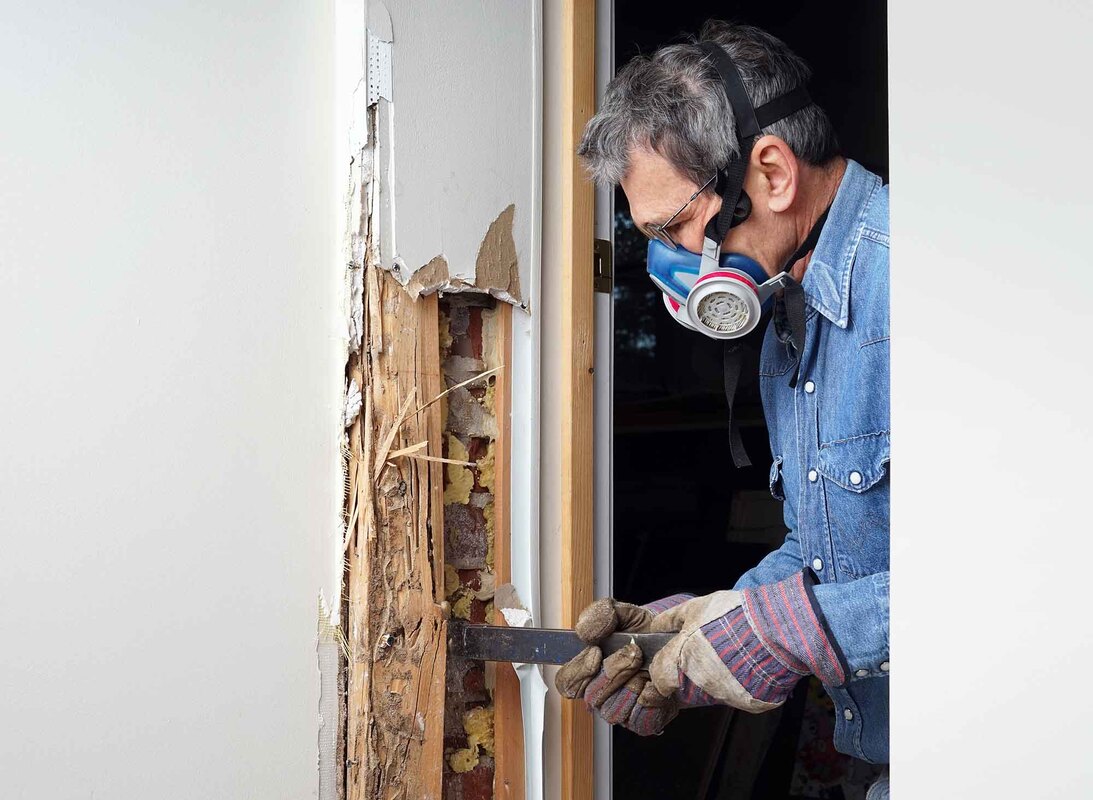
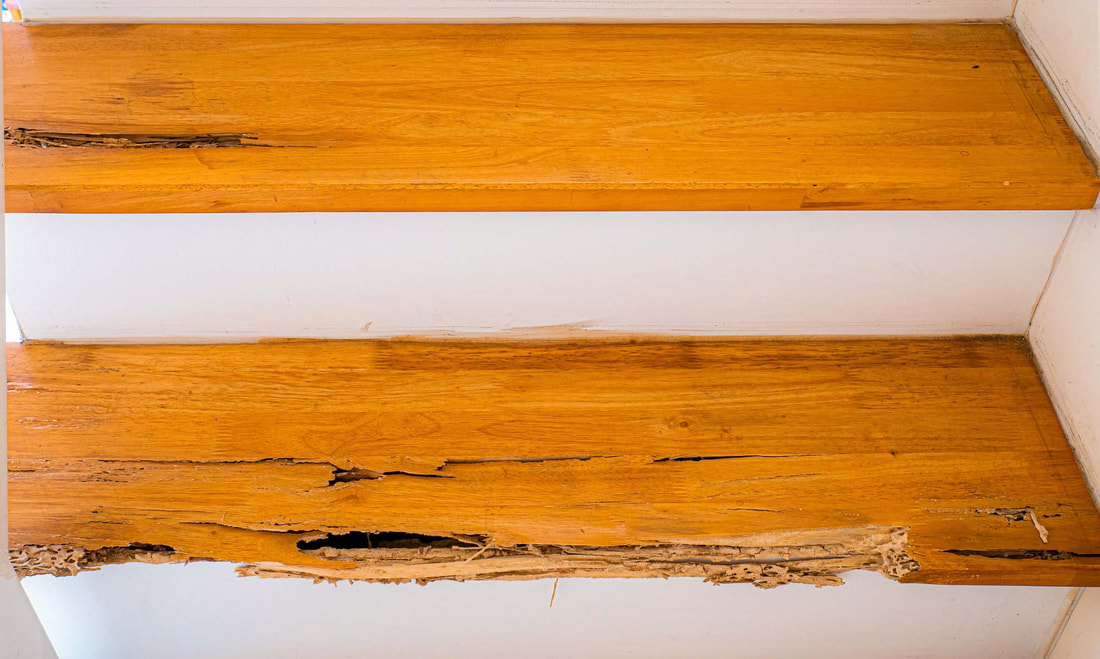
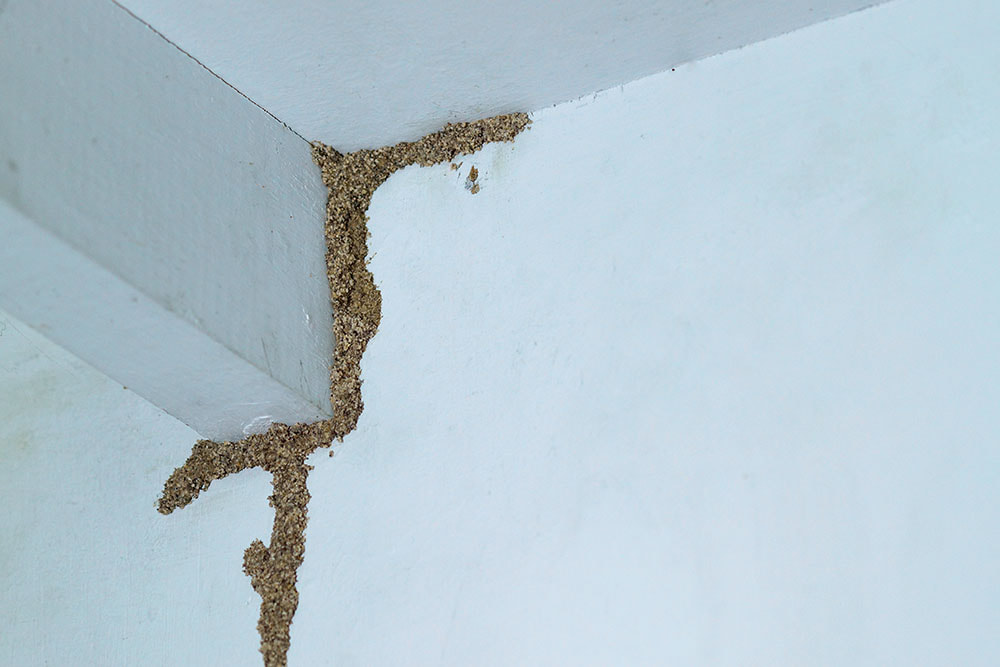
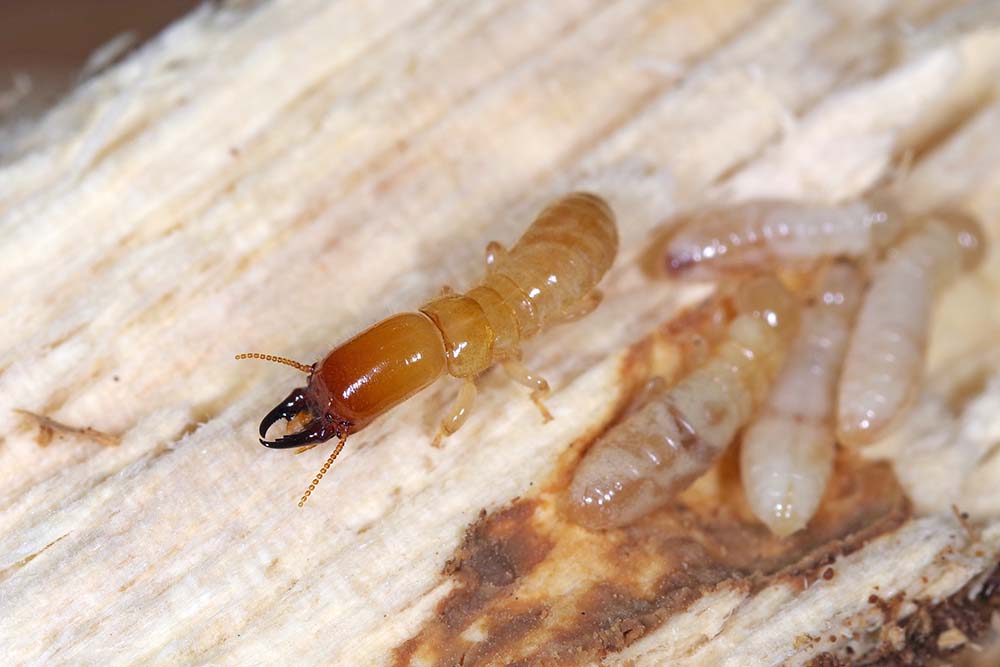
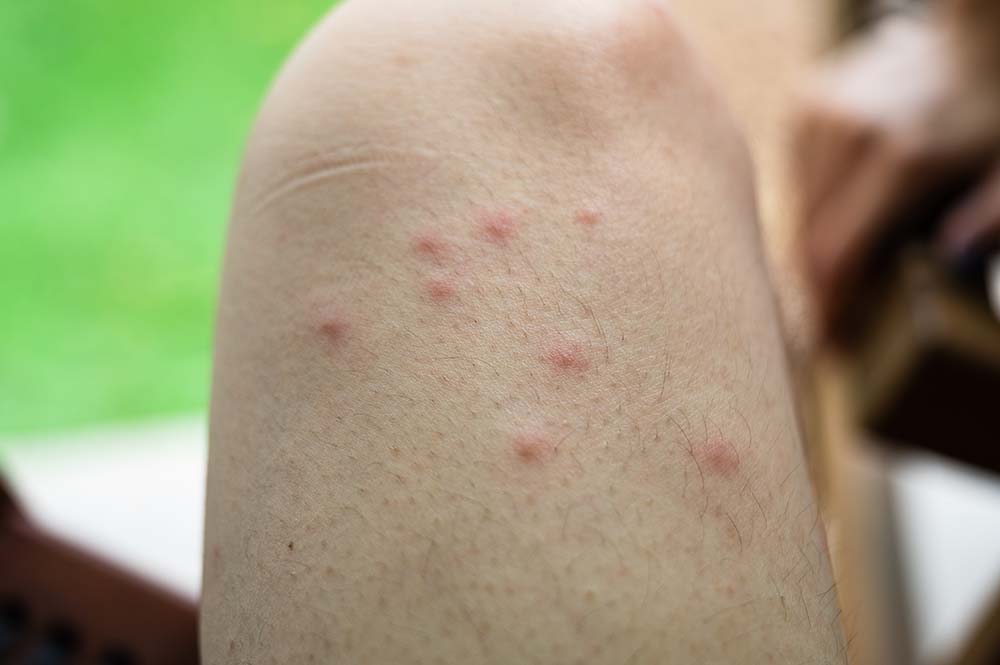
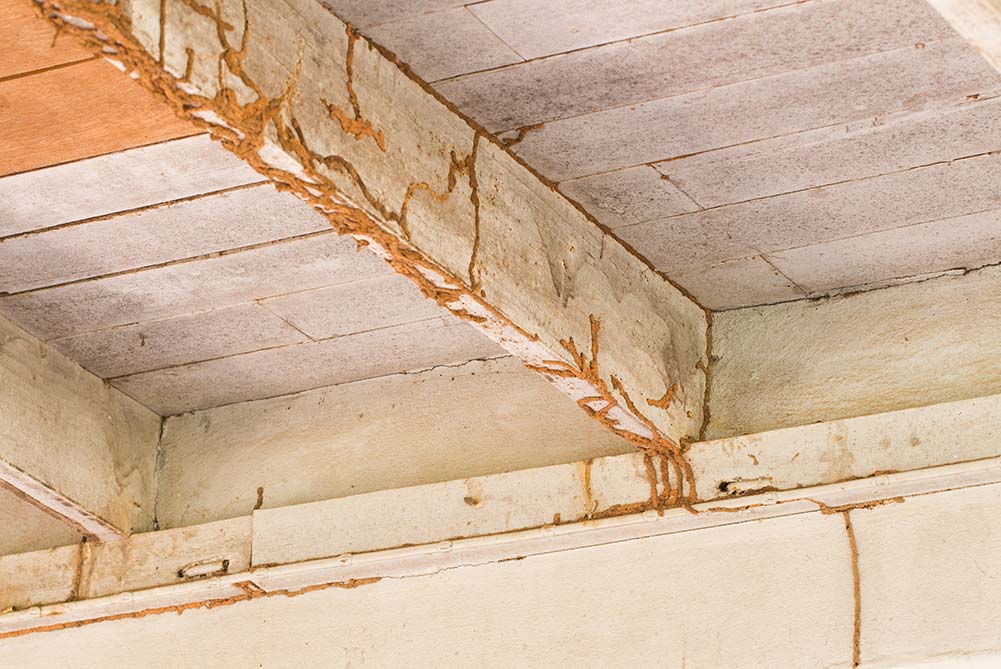

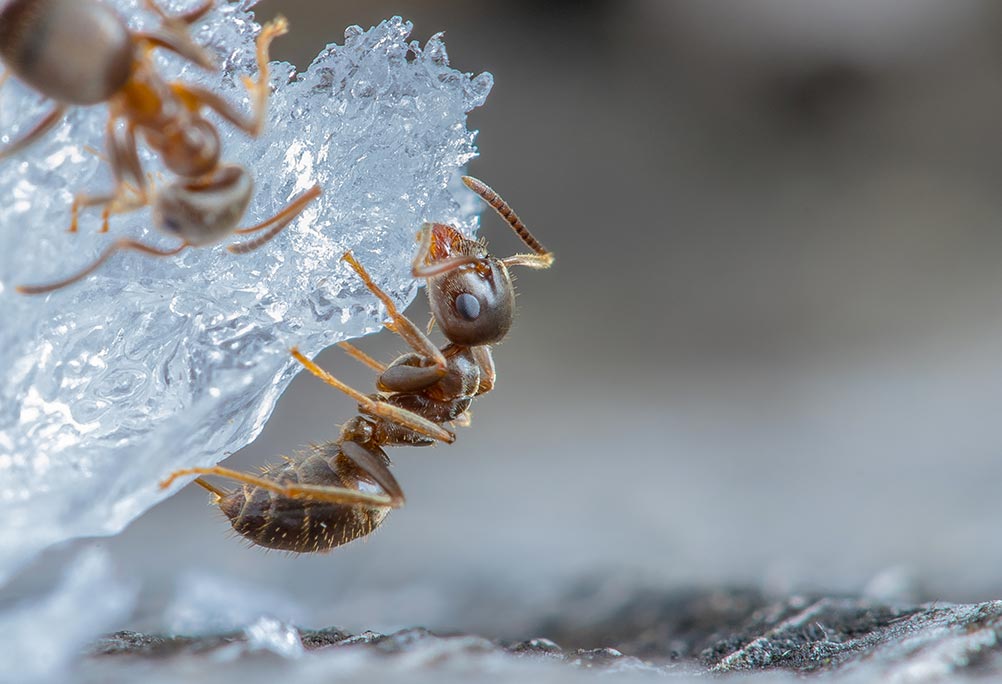
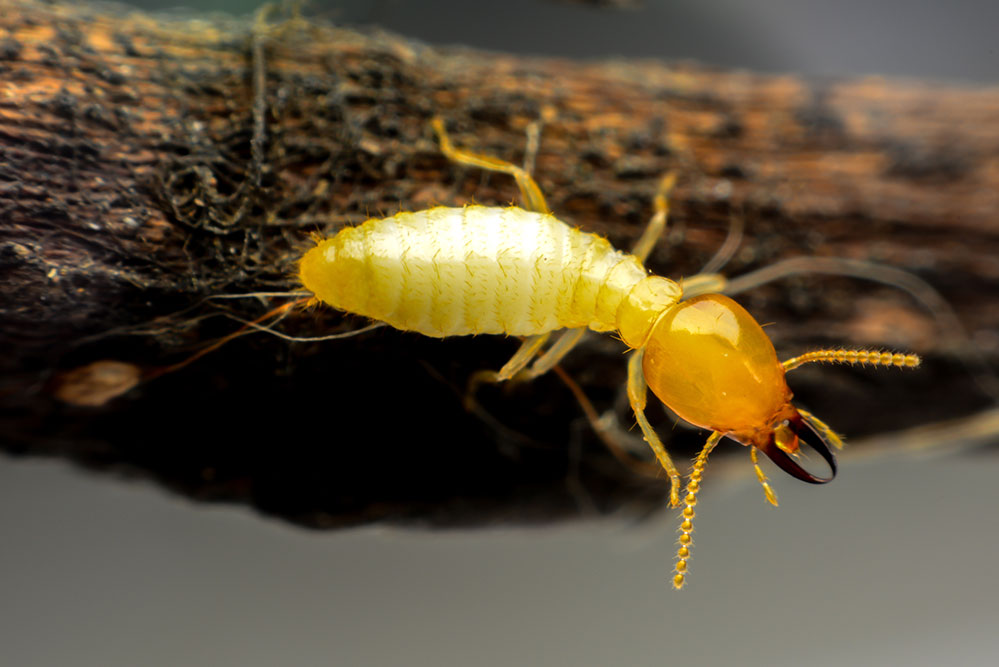
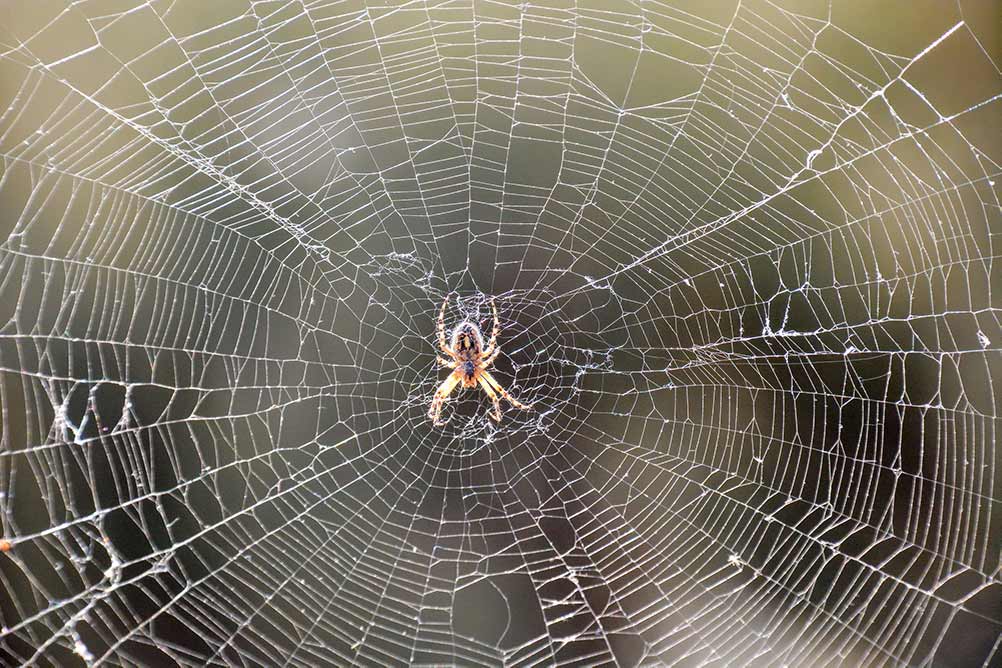

 RSS Feed
RSS Feed

